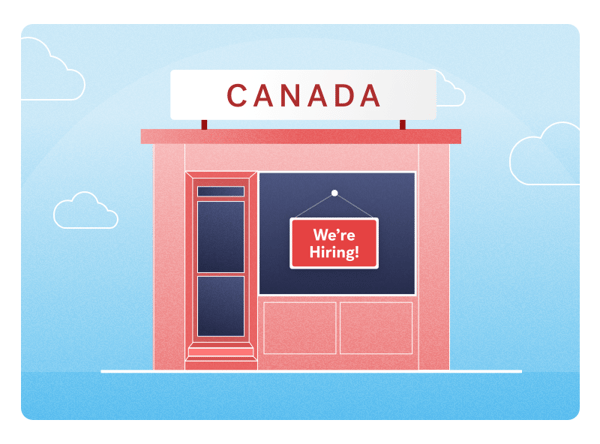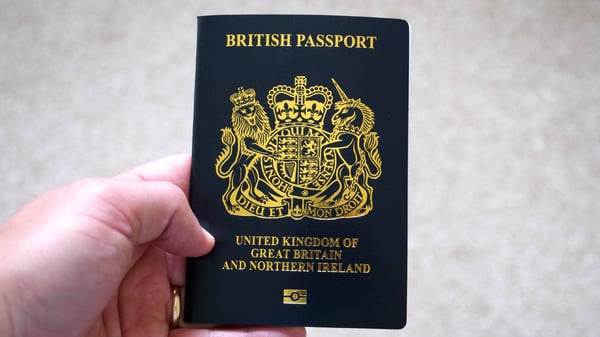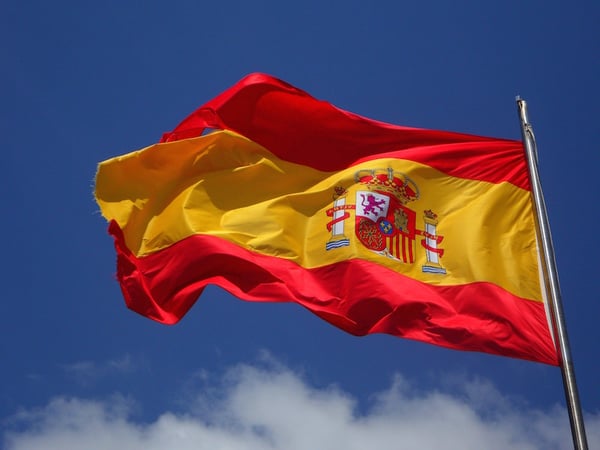Thinking about trading Sweden's scenic landscapes and high quality of life for the vastness and opportunities of Canada? You're not alone. Every year, many Swedes make the leap across the Atlantic, drawn by Canada's diverse culture, thriving economy, and stunning natural beauty. Whether you're considering relocating for career opportunities, education, or a new adventure, moving to Canada from Sweden involves meticulous planning and adjustment to a new environment. We aim to provide you with all the essential information you need to make a smooth transition. From visa requirements and currency exchange, to understanding cultural differences and navigating the job market, we've got you covered.
Planning Your Move: From Visa Applications to Packing
If you're considering moving to Canada from Sweden, there are several important steps you'll need to take. The first step is to determine if you're eligible for a Canadian visa. You can visit the official website of the Government of Canada to find out which visa category is most suitable for you. Once you have identified the appropriate visa, you can begin the application process.
Are you thinking of moving to Canada from the UK or from Australia? Check out our step-by-step guide on moving from the UK to Canada or our guide on moving from Australia to Canada.
After successfully obtaining your visa, it's time to start planning the logistics of your move. This includes deciding what items to bring with you and what to leave behind. It's important to consider the climate and lifestyle in Canada when packing your belongings. You may also need to make arrangements for the transportation of your furniture and other larger items.
In addition to packing your belongings, you'll also need to make arrangements for your housing in Canada. Whether you choose to rent or buy a property, it's important to research the housing market and familiarise yourself with the different neighborhoods and cities in Canada. This will help you make an informed decision about where to live.
Lastly, don't forget to notify relevant authorities and organisations in Sweden about your move. This includes informing your employer, cancelling any subscriptions or memberships, and updating your address with the Swedish tax authorities. Planning your move carefully makes the actual transition a bit easier. Why not also check out our quick checklist for moving to Canada?
Navigating the Canadian Job Market: Tips for Success
Finding employment in Canada is an important aspect of relocating from Sweden. When looking for a job in Canada, understanding the key differences from Sweden's job market is crucial. Sweden's economy is innovation-driven, focusing on sectors like manufacturing, technology, and renewable energy, with strong labor laws and a work culture emphasising balance and teamwork. Whereas Canada's economy is diverse and regionally varied, with key sectors including natural resources, technology, healthcare, and financial services. The Canadian job market also values teamwork but equally values individual achievement, with a strong emphasis on attracting skilled immigrants to fill labor gaps. Here are some tips to help you navigate the Canadian job market and increase your chances of success.
Firstly, it's important to research the job market in your chosen field. Look for job opportunities online, attend career fairs, and network with professionals in your industry. Networking plays a crucial role in Canada, so leveraging platforms like LinkedIn, joining professional associations and attending industry events can significantly boost your chances. Building a strong professional network can lead to job opportunities and valuable connections. Unlike Sweden, where a more reserved approach is common, Canadian job applications often benefit from a proactive attitude, including following up with potential employers.
Understanding the demand and requirements for your desired job will give you a competitive edge. In Canada, it's important to tailor your resume and cover letter to each specific job, highlighting relevant skills and experiences, as Canadian employers value customised applications. Having a well-crafted resume and cover letter aligned to the company and job description can help set you apart in this market. Make sure to proofread your documents for any errors or typos.
Lastly, be prepared for interviews. Research common interview questions, practice your answers, and dress professionally. Show enthusiasm, confidence, and a willingness to learn. Following up with a thank-you note or email after an interview is also a good practice.
Remember, finding a job in Canada may take time and persistence. Stay positive, be proactive, and continue developing your skills and qualifications to increase your chances of success.
Opening a Bank Account in Canada
Opening a bank account in Canada is an important step for managing your finances and settling into your new life. Here's what you need to know about the process.
Firstly, research different banks and their account options to find the one that best suits your needs. Consider factors such as fees, services offered, and accessibility of branches and ATMs. The "Big Five" banks in Canada are: Royal Bank of Canada (RBC), Toronto-Dominion Bank (TD Bank), Bank of Nova Scotia (Scotiabank), Bank of Montreal (BMO), and Canadian Imperial Bank of Commerce (CIBC). These banks are well-established, with extensive branch networks and a wide range of financial services catering to personal, commercial, and institutional clients.
To open a bank account, you will typically need to provide certain documents, such as your passport, proof of address, and proof of employment or study. Some banks may also require a Canadian Social Insurance Number (SIN). Contact the bank directly or visit their website to find out the specific requirements. Once you have gathered the necessary documents, you can visit a branch of the chosen bank or complete the account opening process online, if available. The bank representative will guide you through the necessary steps and explain the account features and services.
After opening your bank account, you can start managing your finances in Canada. Consider setting up online banking, signing up for direct deposit, and exploring other banking services that can make your financial transactions easier and more convenient. Remember to keep your bank account information secure and regularly monitor your transactions to detect any fraudulent activity.
Currency Exchange
When relocating to Canada from Sweden, it's important to consider currency exchange and how it will affect your finances. Here are some key points to keep in mind.
The currency in Canada is the Canadian dollar (CAD), while the currency in Sweden is the Swedish krona (SEK). Before your move, it's advisable to exchange some of your Swedish krona for Canadian dollars to have local currency on hand upon arrival.
There are several options for currency exchange, including banks, currency exchange offices, and online currency exchange platforms. Compare exchange rates and fees to find the most favorable option. Remember that CurrencyFair offers great rates and a flat transfer fee of just C$4 or SEK 30.
When exchanging currency, be mindful of any potential fees and charges. It's also important to stay informed about the current exchange rates to ensure you get the best value for your money. Have a look at the calculator on the bottom of this page or on CurrencyFair's homepage for an idea of the live exchange rate. Keep in mind that currency exchange rates fluctuate, so it's a good idea to monitor the rates and plan your exchanges accordingly. Consider consulting with a financial advisor for personalised advice and guidance.
By taking the time to understand currency exchange and making informed decisions, you can effectively manage your finances during your transition to Canada.
Exploring the Great Outdoors: Embracing Canada's Natural Beauty
One of the greatest joys of relocating to Canada is the opportunity to explore its breathtaking natural beauty. From stunning landscapes to diverse wildlife, Canada offers a wealth of outdoor experiences. Here are some ideas to get you started.
Visit Canada's national parks: Canada is home to numerous national parks, each offering unique natural wonders. Whether it's hiking in the Rocky Mountains, camping in Algonquin Provincial Park, or whale-watching in Pacific Rim National Park Reserve, there's something for every nature enthusiast.
Experience winter activities: Canada is known for its winter sports and activities. Try your hand at skiing, snowboarding, ice skating, or snowshoeing. You can also experience the thrill of dog sledding or witness the mesmerising Northern Lights in the northern regions.
Explore coastal regions: Canada has a vast coastline, offering opportunities for beachcombing, kayaking, and whale-watching. Visit the rugged shores of Newfoundland and Labrador, the picturesque beaches of Prince Edward Island, or the stunning fjords of British Columbia.
Go on wildlife encounters: Canada is home to diverse wildlife, including bears, moose, whales, and eagles. Take a wildlife tour or go on a guided hike to spot these magnificent creatures in their natural habitats. Just remember to always respect wildlife and follow local guidelines.
Engage in outdoor sports: Canadians are passionate about sports like hockey, soccer, and lacrosse. Join a local sports team or participate in community events to immerse yourself in the Canadian sports culture.
As you explore Canada's natural beauty, remember to prioritise safety, and follow any guidelines or regulations in place. When you're hiking, camping, or engaging in outdoor activities, be prepared and respect the environment and wildlife. Embracing Canada's natural beauty will not only provide you with unforgettable experiences but also help you feel more connected to your new home.
Adapting to Canadian Culture: Differences and Similarities
Moving to a new country means adapting to a new culture, and Canada is no exception. However, they do share several common values. Both nations prioritise social welfare, boasting robust healthcare and education systems that underscore their commitment to quality of life. Canadians and Swedes alike cherish their natural environments, promoting sustainability and outdoor activities, whether it's enjoying Canada's majestic national parks or Sweden's serene archipelagos. While these similarities make transitioning between the two relatively smooth, there are also many differences to be aware of.
One key difference is the language. While English and French are the official languages of Canada, English is the most commonly spoken language. If English is not your first language, it may be helpful to enroll in language classes or practice speaking with native English speakers to improve your language skills. Canadians tend to be more diverse and multicultural, with a rich tapestry of ethnic communities influencing everyday life, whereas Swedish culture is more homogeneous, though equally inclusive and open-minded.
Another difference is the social etiquette. Social interactions in Sweden often lean towards formality and reservedness, reflecting a cultural norm of 'lagom' or moderation, whereas Canadians are generally known for their friendliness and politeness, often striking up conversations with strangers. It's important to be courteous and respectful in your interactions with others. Canadians also value punctuality, so try to arrive on time for appointments and social gatherings.
When it comes to food, Swedish and Canadian cuisines share a love for hearty, home-cooked meals using fresh, local ingredients, including a variety of fish, meats, and root vegetables. Both cultures enjoy smoked fish and have strong baking traditions with sweet pastries. However, they differ significantly in their specific dishes and ingredients. Swedish cuisine features unique items like gravlax, surströmming, and kanelbullar, while Canadian cuisine includes regional specialties like poutine, butter tarts, and maple syrup. Additionally, Canadian cuisine reflects its multicultural population with a diverse array of international foods, whereas Swedish cuisine remains more focused on traditional and local dishes. Don't be afraid to try new dishes and explore the local food culture.
Overall, adapting to Canadian culture is an exciting opportunity to learn and grow. Embrace the differences, be open-minded, and don't hesitate to ask for help or guidance if needed.
Building a New Social Circle: Making Friends in Your New Home
Moving to a new country can be both exciting and challenging, especially when it comes to building a new social circle. Here are some tips to help you make friends in your new home in Canada.
Join community groups and organisations: Canada has a vibrant community life, with various groups and organisations catering to different interests and hobbies. Whether it's a sports club, language exchange group, or volunteer organisation, joining these groups can help you meet like-minded individuals.
Attend local events and festivals: Check out the local events calendar and participate in festivals, fairs, and cultural celebrations. These events provide opportunities to connect with people from different backgrounds and learn more about Canadian culture.
Take up a new hobby or activity: Enroll in a class or workshop to learn a new skill or pursue a hobby you're passionate about. This can be anything from painting and cooking to dancing and photography. Not only will you acquire new skills, but you'll also meet people with similar interests.
Use social media and online platforms: Join online communities and forums related to your city or interests. Platforms like meetup.com and Facebook groups can connect you with people who share your hobbies or are in a similar situation to you.
Don't be afraid to initiate conversations and reach out to people. Canadians are generally friendly and welcoming, so strike up conversations with your neighbors, colleagues, or fellow students. Small gestures like inviting someone for a coffee or joining a group outing can go a long way in forming friendships.
Be patient and persistent in your efforts to make friends. Building meaningful connections takes time, so don't get discouraged if it doesn't happen overnight. Keep an open mind, be yourself, and embrace the multiculturalism that Canada offers. Remember that making friends is a two-way street. Show genuine interest in others, be a good listener, and be supportive. By being proactive and open to new experiences, you'll soon find yourself surrounded by a new social circle in your new home.
Moving to Canada from Sweden is an exciting journey filled with opportunities and new experiences. While the transition involves meticulous planning and adjustment, it opens the door to a vibrant, diverse culture and a thriving economy. From navigating visa requirements, the job market and currency exchanges to understanding cultural nuances and exploring breathtaking natural landscapes, there are many aspects to consider. By embracing the differences, and immersing yourself in Canadian life, you can be sure of a smooth and successful transition. As you embark on this new chapter, remember to stay positive, proactive, and open to the endless possibilities that await you in Canada.
This information is correct as of 1st July 2024. This information is not to be relied on in making a decision with regard to an investment. We strongly recommend that you obtain independent financial advice before making any form of investment or significant financial transaction. This article is purely for general information purposes. Photo by John Lee on Unsplash.




.jpg?width=600&name=sander-crombach-6b3r1WAjPBI-unsplash%20(1).jpg)






